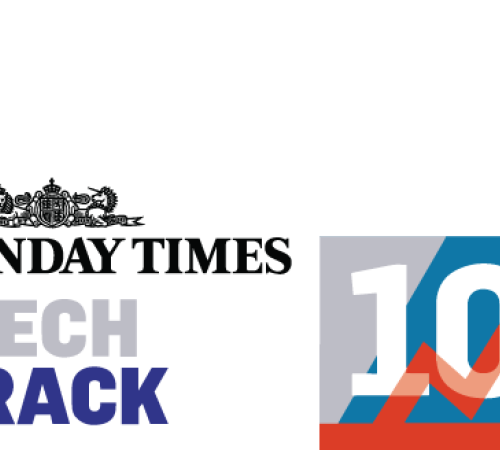

Analytics is something every business needs to stay competitive in today’s data-filled world. And every manager needs to at least understand the basics of analytics and when and where to apply it.
That’s why my latest book outlines more than 60 different analytics tools that businesses of every size need to consider, what they mean, and how to implement them.
The following are some of the most important analytics techniques for businesses of every shape and size to know and understand in order to move their business forward.
1. Cash flow analytics
Knowing how money is moving in and out of your business (cash flow) and knowing how easy it will be to convert your assets to cash should you need money quickly (liquidity) are essential measures to help you gauge the health, stability and longevity of your business.
Cash flow analytics, therefore, examines the cash flow in the business and seeks to predict it so that you can avoid problems.
The day to day running of a business requires a certain amount of cash to keep the cogs turning, wages need to be paid, raw materials need to be purchased and suppliers paid. Tracking cash flow allows you to appropriately manage it in real time to prepare for the future, so it’s vitally important otherwise you may simply run out of money.
These calculations may enable you to plan for the unexpected, setting money aside for incidents of emergency staff cover or equipment damage for instance. However, if these are plausible risks to your company you should be factoring in business insurance to protect you from sudden changes in outgoings.
2. Product profitability analytics
Most businesses know how profitable the business is but very few take the time to dig deeper into the individual profitability of each product or service they offer. As a result, few businesses know which of their products are making or losing money.
In order for profitability analytics to be genuinely meaningful, it’s necessary to uncover hidden or specific profit and losses pertinent to each product.
Yet that’s much easier said than done. Many businesses have large, complex product lines, operationally it is often very difficult to separate costs across those product lines accurately. But without an understanding of which products are profitable and which products are eating into profit poor strategic decisions are likely, so it’s always worth the effort.
3. Customer profitability analytics
Customer profitability analytics is the process of identifying which of your customers are actually making you money. There is often an assumption in business that any customer is a good customer but that is not always the case. Customer profitability usually falls within the Pareto principle or 80/20 rule.
In other words there is likely to be 20% of your customer base who account for 80% of your profit. Conversely there is also likely to be another 20% of your customers who account for 80% of your customer-related costs. Knowing which is which is important.
If you can’t differentiate between the customers who make you money and those customers who lose you money then you will treat all your customers the same and diminish your profitability.
This knowledge can help you to focus on the highest profit centres by really looking after those customers who are profitable and encourage the ones who cost you money to go to your competition.
4. Market size analytics
Market size analytics is the process of working out how large the market is for your products and services and whether there is any growth potential. Essentially the size of a market can be thought of in terms of ‘how many’, ‘how much’ and ‘how often’.
It seeks to work out how many people want or may want your product or service and how often they may buy it. But the current size of the market is not the only consideration with market size analytics. Market potential is equally, if not more important than current size.
If you don’t understand the size and potential of your market you can easily jump to conclusions about how viable your business proposition is and waste vast sums of money and time competing in the wrong market or a market that is already reaching saturation point.
It’s essential to know where your products are in their lifecycle and whether you are competing in a growing or declining market.
5. Non-customer analytics
Non-customer analytics is about understanding what people who are currently not your customers think about your product, services or brand.
If we identify our ideal customers and our competitors are doing the same and getting the same profile, then we are all competing for an ever decreasing slice of an ever decreasing pie. Price wars begin and the market becomes fiercely competitive as we fight tooth and claw for customers.
Alternatively we could conduct non-customer analytics to work out who is not buying from us and why, so we can move into new, less crowded markets.
Obviously if you can find new markets or new pockets within larger markets that have yet to be approached by you or your competitors then you have an opportunity to increase revenue cost effectively.
6. Pricing analytics
Pricing analytics is the process of analysing price sensitivity in market segments, and it is one of the critical territories of business analytics. Pricing analytics has emerged as an important tool to increase profitability, especially in highly competitive markets where everything that can be done has been done.
What if you could find out exactly how much your customers would pay for your product ahead of time? Price analytics is the process that delivers that outcome.
It allows you to tailor your pricing to different segments of your market so you can capitalise on the ‘low hanging fruit’ and those who are willing to pay more for your product or service. This means you can increase volume and profit margin to positively impact revenue simply by using some clever pricing analytics.
With more and more pricing information available in real time, companies can also dynamically adjust prices and match competitors in real time when they increase or decrease their prices.
7. Customer lifetime value analytics
Customer lifetime value analytics is the process of analysing how valuable the customer is to the business over the entire lifetime of the relationship. Instead of looking at transaction profitability this tool seeks to establish how long a customer is likely to stay a customer, how often they are likely to buy during that period, and how valuable they are across that timeframe.
For some companies a customer may be profitable as soon as they make their first purchase. For others they may only become profitable after several purchases. Clearly it’s important to know which camp your customers fall into.
This insight can allow you to focus your marketing attention on the ones that are most likely to buy. And, if you know how much a customer is worth to your business over the lifetime of the relationship, this information will then direct how much you can afford to spend in attracting that customer in the first place.
8. Social media analytics
Social media analytics is the process of gathering and analysing data from social media. The rise of social media has created a rich vein of data from individuals who are customers or potential customers.
Social media analytics offers you an almost real-time glimpse into what your customers or potential customers think and feel about your business.
These insights can be used to increase revenue by tapping into un-met customer needs, reduce customer service costs, and highlight customer service issues that cause loss of business or reputation. They can also be used by product development to gain real world feedback on products and services.
9. Customer engagement analytics
Customer engagement analytics is a highly evolving field at the moment where businesses are trying to map the entire customer interactive journey on and off-line. Essentially, it is the process of assessing how well (or otherwise) you engage your customers with your products, services or brand through these various interactions.
Business is notoriously bad at customer engagement, and yet it impacts bottom line results. When customers want to speak to you and get passed around several departments, having to explain the situation all over again to each department can be infuriating for them.
Customer satisfaction is not the predictor of behaviour that many companies once assumed it was. The argument has always been that satisfied customers = loyal customers = profit. Unfortunately in the modern world of multiple options and constant deals whether a customer is satisfied is not necessarily enough to keep them as a customer. Customer engagement, on the other hand, can fix this problem.
10. Project and program analytics
Project and program analytics is the process of assessing how effective your internal projects and programs have been so you can improve them in the future.
There are always three key components that successful delivery is measured against:
- schedule – is the project on schedule?
- budget – is the project on budget?
- deliverables – is the project delivering the specified outcomes?
Project and program analytics assesses performance against schedule, budget and quality of output.
Most strategic and change initiatives are delivered via projects or programs. If they are unsuccessful, too disruptive or do not get finished on time, on budget or to the right standard then the implications can be felt right across the business.
Keeping an eye on project and program performance as they progress is far better than setting out the target and crossing your fingers that it will be met. On-going assessment can help you to anticipate any potential problems and take evasive action to avoid challenges before they occur or to get the project or program back on course if it starts to slide.
Interested in learning more about the key analytics your business needs to succeed? Check out my latest book, Key Business Analytics (external link).
Disclaimer:
At Hiscox, we want to help your small business thrive. Our blog has many articles you may find relevant and useful as your business grows. But these articles aren’t professional advice. So, to find out more on a subject we cover here, please seek professional assistance.






